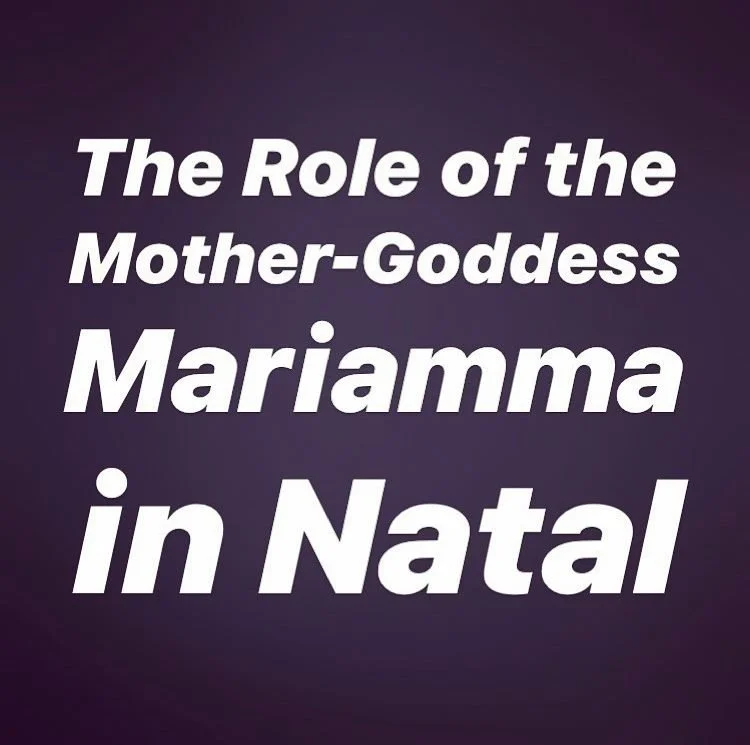Goddess Mariamma
“Perhaps the most well-known of the ceremonies in honour of Mariamma is that held at the Isipingo temple, near Durban, at Easter each year. This temple, privately owned, was built in 1870 on the site of the hole of a sacred cobra, identified with Mariamma, which is believed to appear once a year during the festival. While in India, and formerly in South Africa, Mariamma is associated with outbreaks of smallpox and cholera, in South Africa she is regarded as both the sender of diseases like measles and chickenpox and, if properly worshipped and propitiated, as the protectress against them.
Most of the hundreds of worshippers who come to Isipingo each year come as the result of a vow taken to Mariamma for healing or recovery from illness...One of the main differences between "village" Hinduism and the sanskritic tradition is the type of offering or sacrifice made to village or "folk" deities.”
(*important note by Esha - "village Hinduism" in this context is code for backwards/wrong/impure/unclean. The Mariamma goddess and so called "village" and low-caste practices associated with her worship are actually not from Hinduism, because Mariamma worship has indigenous origins, specifically in Southern India in Tamil Nadu. They are from the pre-vedic period, meaning, before Hinduism, Indo-Aryan influences and Brahmin domination/supremacy; and "Sanskritic tradition" is code for Brahminical Hinduism and what upper caste folks consider to be real/right/pure/clean Hinduism)
.” ...families had lit fires to cook their slaughtered fowls and several people had entered a state of trance, with needles piercing their tongues. One man dressed as the goddess, was performing an excited dance, his face painted pink and his body covered with streamers of yellow and green crepe paper. At Isipingo, although there was an emphasis in the main temple itself on sanskritic offerings of fruit and flowers and ritual purity- such as those found at other temples to orthodox Hindu gods like Siva or Vishnu- there were also apparent features of the "little tradition" or "folk worship" such as blood sacrifices and trance possession.”
(*important note by Esha - customs and practices that have either indigenous, Dalit or lower caste origins/following are often co-opted and stolen by upper caste and Brahmanical Hinduism. This erasure and violence is both apparent in the subcontinent and across diasporas where descendants of indentured labourers come from. This erasure also impacts how coolie communities view Hinduism and how they either conform, or end up creating different customs relative to their new communities).
“Moreover, worshippers at Isipingo were not limited to Tamil speakers but included Hindi speakers as well...the festival was clearly designed to protect the local community as a whole... Although measles is a common childhood disease in South Africa and one that most white children recover from with few ill-effects, it is very much more serious among Black communities. Many Indian children in Greenfields are malnourished...in these circumstances the contraction of measles often leads to complications affecting the ear, eyes and chest...since modern medicine has not been able to provide a satisfactory alternative explanation or cure, people in Greenfields and elsewhere have to go to a "folk" strategy in their efforts to cope with the situation.”
-Religion in Southern Africa, The Role of the Mother-Goddess Mariamma in Natal, G. Buijs
